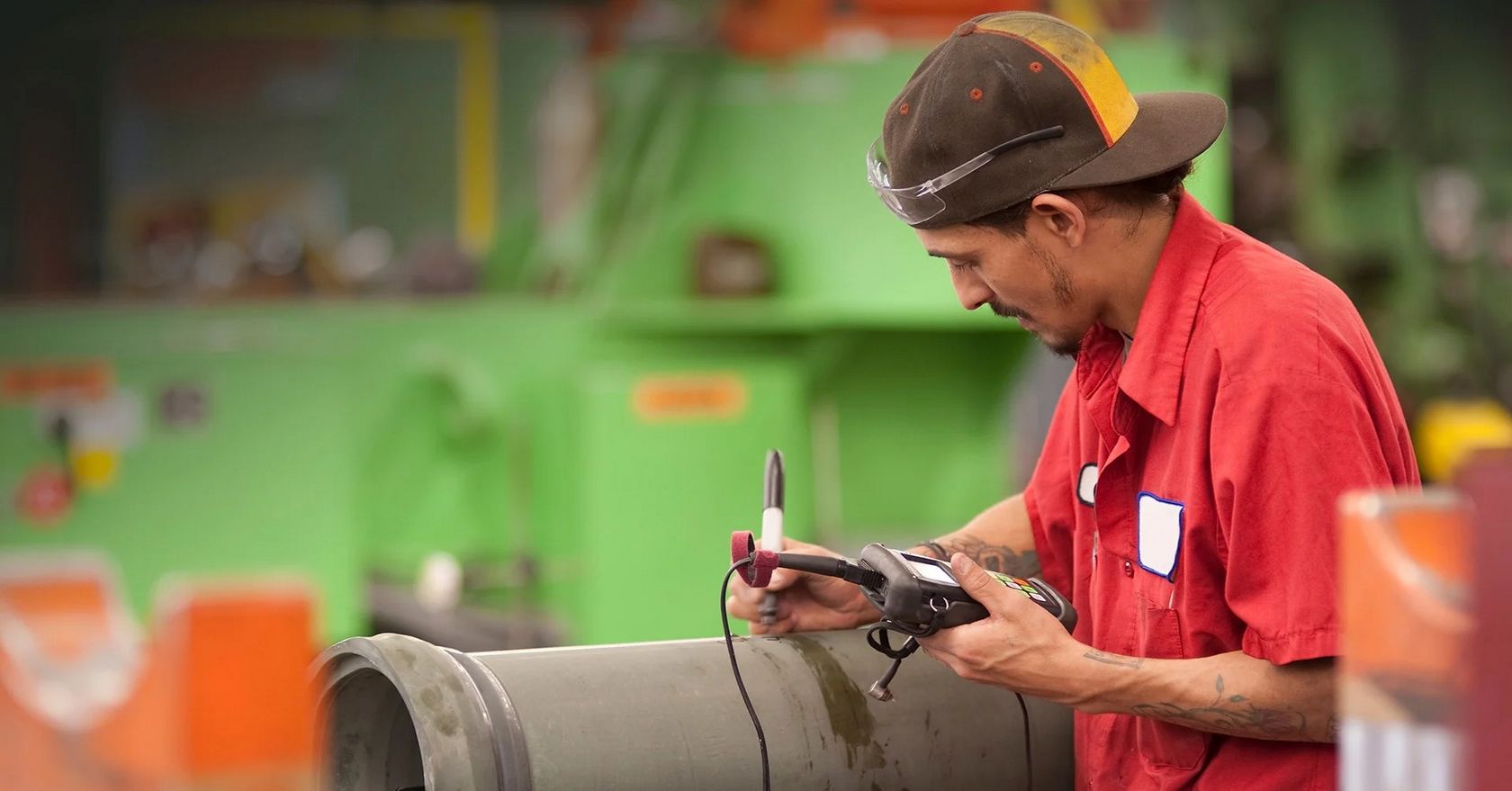Manufacturing workers of many different experience levels have to fill out forms on a regular basis. It’s not something you can perfect on your first day, and it’s often seen as a chore that plagues even veteran employees. With the complicated and diverse nature of forms in manufacturing, it’s easy to mix things up and make simple (but significant) mistakes.
The manufacturing industry faces many unique challenges when it comes to forms: an aging workforce, seasonality, a mixture of skilled and unskilled labor, outsourcing, and more. All these contribute to an uncertain environment where forms are often an early casualty. If you’ve ever encountered a manufacturing form with novel-length notes in the margins, you know what we’re talking about!
This article will show you how a mobile forms solution can keep workers on track regardless of their seniority, position, or training. Let’s start by unwrapping with one of the biggest issues manufacturers face today: the changing nature of the manufacturing workforce.
Seasonality, outsourcing, and an aging workforce
The face of manufacturing has been changing for years. Frontline workers are older than ever, and a more mature workforce often struggles with change or adopting new technology. Seasonality has always been an issue, especially in automotive manufacturing. Seasonal workers unfamiliar with a specific factory’s order of operations need to be quickly trained—and they’re soon gone when their contract ends. Likewise, outsourcing unskilled and semi-skilled labor results in lower costs, but it lacks control and raises quality concerns.
This changing workforce raises many issues when it comes to handling forms. For example, older workers might be reluctant to change their ways, opting to write in the margins instead of following a new process. Meanwhile, seasonal workers may need frequent reminders which form goes with which process. With outsourced labor, workers who speak English as a second language might need additional supervision when filling out forms, or they may be unable to fill out forms altogether.
What do these challenges have in common? It’s the need for accountability. Managers and directors need to know that no matter who is on the factory floor or filling out forms, production goes according to plan. The best way to achieve that goal is with an integrated mobile forms solution.
How mobile forms keep workers on track
First, let’s talk about the obvious benefits. With mobile forms, you’ll never have to worry about lost or damaged paperwork, illegible handwriting, or doodles in the margins. The digital nature of mobile forms automatically eliminates those possibilities. An integrated mobile forms solution also features clear audit trails that make every task, form, and action accountable. Because all activity is digitally logged in a central database, you’ll know who performed which action and when they did it.
But that’s just the tip of the iceberg when it comes to keeping workers on track. There are three much bigger ways that mobile forms combat the unique challenges of the manufacturing workforce: form configuration, workflows, and custom integration.
Form configuration
Form configuration is the process of matching a mobile form to your existing operations. That doesn’t simply mean copying all the data fields from a paper form to an app, though. Engineers tweak each mobile form to be greater than the sum of its parts, incorporating all the elements of your process in an integrated app. That entails new digital features, like embedded reference information, branching logic, and field validation.
These features are of particular benefit to seasonal and outsourced workers. All they have to do to be reminded of the standards is tap an icon, then visual and textual references appear in a popup. Meanwhile, branching logic hides irrelevant questions and only shows them when a worker gives specific answers. This considerably simplifies forms and helps newer employees focus on the task at hand. Finally, field validation rejects empty or unexpected entries, ensuring that workers gather all the required information before submission.
Workflows
Workflows are automated background processes that connect activity within forms to other forms, tasks, and systems. Many different types of workflows can cooperate with forms, pushing or pulling data to reach the desired outcome. These can be simple, like sending a notification to a supervisor when a red-flag issue is uncovered. They can also be more complex, involving multiple teams or stakeholders bouncing priority between them. The most frequently used workflows in manufacturing automate escalations, approvals, and corrective actions.
Workflows take the guesswork out of the next steps for inexperienced employees. For veterans, they make form-filling operations faster by eliminating manual processes. Supervisors can immediately fire off a follow-up task (or even automate task assignment) after receiving a notification via workflows, and everyone benefits from speedier corrections. Most importantly, the production cycle sees less downtime because tasks like corrective maintenance reach their destination sooner.
Custom integration
Custom integration is the connective tissue that binds all your other systems to mobile forms. A custom integration layer acts as a “middleman” between the API (application program interface) of your forms solution and any other software tools you use. In practice, this means that forms can communicate with work order systems, ERPs, QMS platforms, and anything else you can imagine.
The bespoke nature of custom integration means that you’re not limited to any specific set of functions or list of compatible programs. The systems you currently use and any that you may adopt in the future are all viable thanks to the flexibility custom integration offers. When an inspection identifies a critical issue, custom integration makes the process look like this:
- A serious issue with an asset is discovered in a mobile form
- The inspection form is uploaded, and the relevant workflows trigger
- Simultaneously, a notification reaches all stakeholders, a ticket is entered into the work order system with all the relevant information, and the incident is noted in the asset management system
- After the work order is complete, another trigger can begin a final follow-up inspection and notify the stakeholders
Ultimately, this means less legwork for workers and supervisors alike. The less time you spend manually moving data from one place to another, the more time you can take to improve the business. Custom integrations help you shift the focus from putting out fires to enhancing overall productivity.
How FORM can help
The best way to keep manufacturing workers on track is by integrating and automating form-based processes. Form.com can help your workers complete forms faster and more accurately with help from configurable logic, workflows, and custom integrations. Learn more about how we can jumpstart your digital transformation by getting in touch with a solutions expert today.




